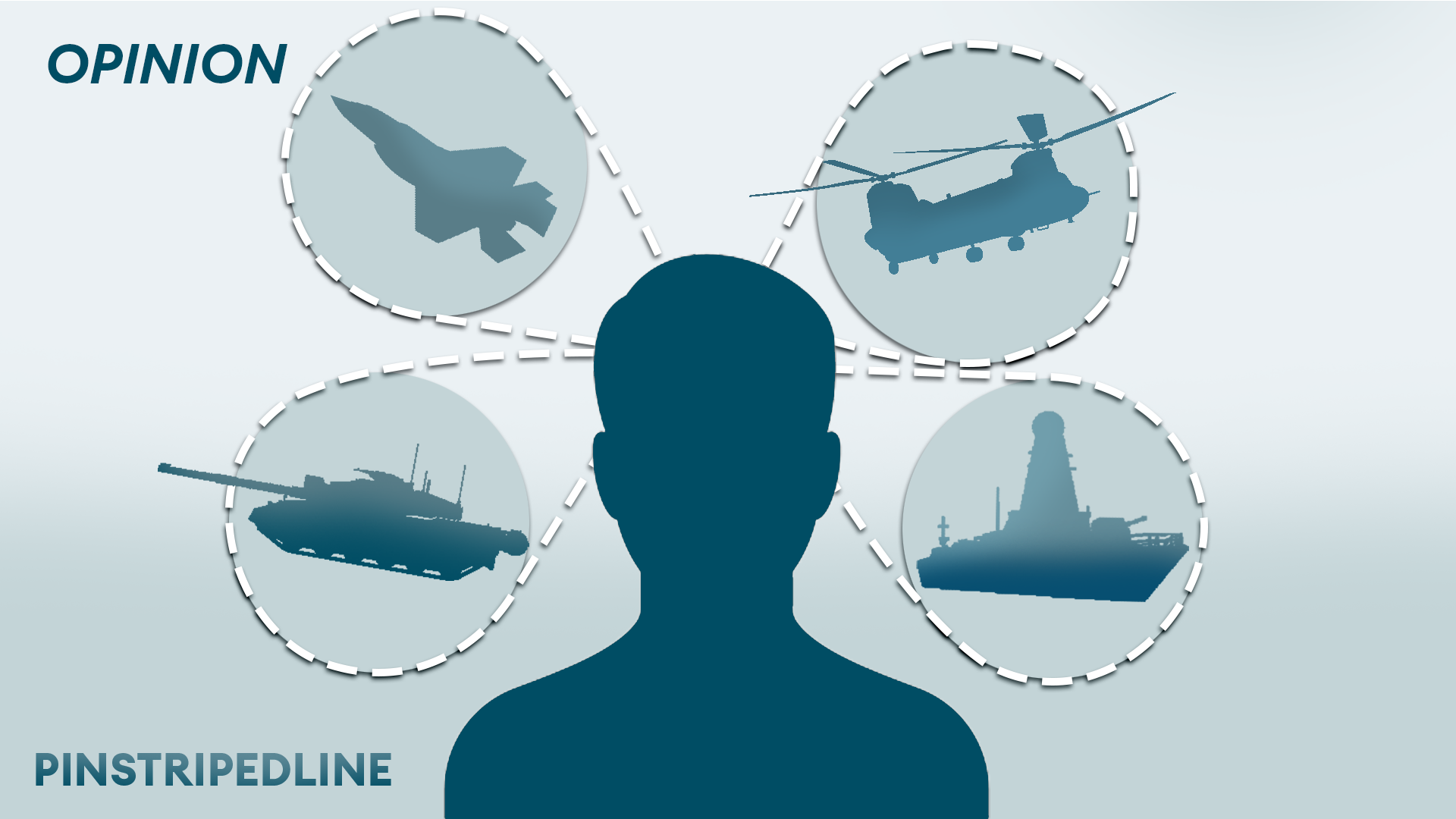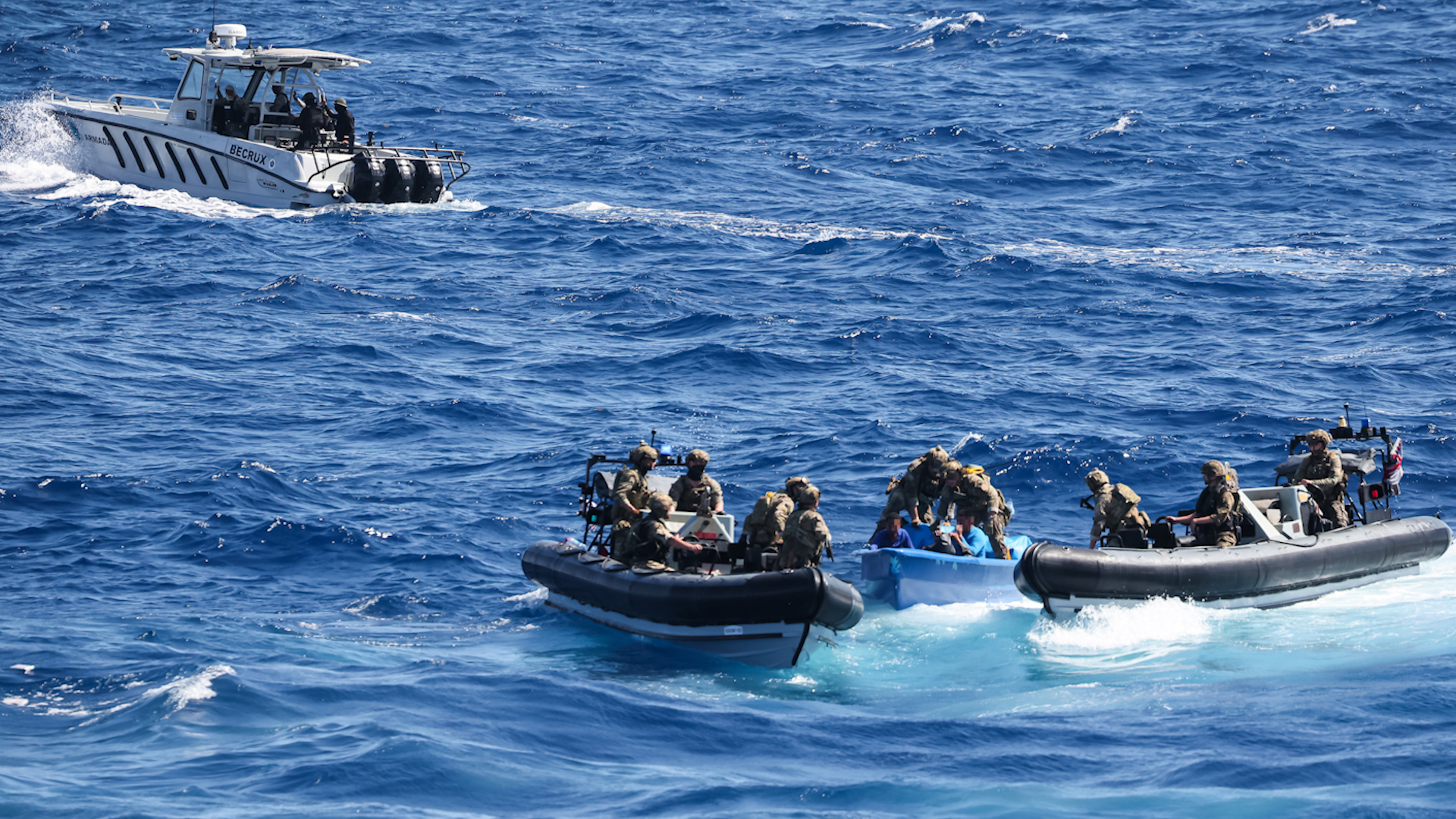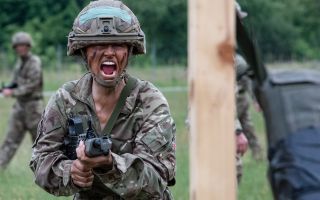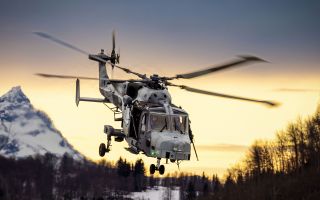
Are OPVs an ideal solution for Royal Navy's needs or should emphasis be on bigger warships?

Defence and security blogger @PinstripedLine discussed whether the Royal Navy's offshore patrol vessels (OPVs) are the answer for a stretched service or should efforts be concentrated on bigger warships.
The Royal Navy offshore patrol vessel HMS Trent has made headlines by being responsible for leading an operation to capture a narcotrafficker 'submarine' in the Caribbean.
Working in partnership with US Coast Guard and Navy colleagues, Trent's team of sailors and Royal Marines helped capture the vessel, seizing more than £160m of drugs bound for the USA.
In the last eight months, Trent has seized more than £750m worth of drugs, causing severe disruption to the narcotics cartels, making her the most successful drugs-busting ship in the Royal Navy in the 21st century.
In the process of achieving this feat, she overtook HMS Argyll, which seized around £650m in 2016, a fact which highlights that Trent and her four sister ships deployed around the globe are some of the hardest working and tasked ships in the Navy today.
Able to carry out a diverse but often unglamorous range of tasks from conducting defence diplomacy to disaster relief or counter-narcotics patrols, these ships are at the forefront of the global footprint of the Royal Navy.

But, for all their value, they also divide opinions online, with social media commentary often focused on whether they are 'real' warships or if they need more weaponry and capability to be credible.
In an era when the Navy is short on people and overstretched, every platform counts in the event of a fight. Given this, are they the right answer for the Royal Navy, or is it better to focus money on bigger warships?
Historically, since the 1970s the Navy deployed its major warships around the globe on their own, sailing from the UK and then spending six to eight months deployed.
For decades, deployments like the West Indies or Falklands guardship were a fact of life for crews, enabling them the chance to see the world and 'show the flag', providing both military presence and a retention-positive deployment.
This meant that fleet numbers were designed to support permanent deployments in these areas, which usually required three hulls (one on deployment, one working up to go on deployment and one returning / in refit). This rule of three was central to how the Navy designed and structured its escort force numbers.
Over the last decade or so, there has been a fundamental change to this approach, with the Royal Navy using the introduction of the Queen Elizabeth-class aircraft carriers to adopt a very different way of using the fleet.
The goal now is to build a carrier strike group which brings together groups of ships at higher readiness, able to deploy as a formed task group to conduct operations.
This was demonstrated in 2021 during the OP FORTIS deployment, when HMS Queen Elizabeth, supported by several escorts, deployed to the Far East, and is likely to occur again in 2025 with HMS Prince of Wales going out to the region.
This move has many benefits, including getting the Navy used to working as part of international task groups, and being able to train and operate at the most challenging levels of warfighting, operating a carrier strike group far from home to carry out attacks by land, sea and air.
The challenge with this approach is that it reduced the number of ships available to go on the 'guardship' deployments, as these hulls were now committed to support the strike group concept.
Additionally, many of the jobs the escorts carried out on these tours were not particularly demanding – they were operationally vital but they did not, by themselves, necessarily need to tie up a complex and expensive frontline warship.
For example, when a Type 45 is deployed to the West Indies, she realistically carried more anti-aircraft missiles than most nations in the region combined had fast jets.
The chances of ever needing to employ the world-beating radar/Sea Viper missile combination there, versus somewhere like the Red Sea, was slim.
Additionally, the cost of constantly generating ships to deploy, and travel globally was significant while, from an impact perspective, busy programmes meant that it may only be possible to visit a foreign port once every few years, reducing the opportunity to build good defence relationships with partners.
To resolve this, the Royal Navy exploited an opportunity arising from the need to keep shipyards open in the gap between Queen Elizabeth and beginning work on the Type 26 and 31 by building five Batch 2 River class OPVs.
The goal of the ships was to provide a cheap capability that enabled enduring presence without tying up high-value assets far from the fight.
All five are permanently deployed abroad on an enduring basis, in the West Indies, South Atlantic, Gibraltar and Indo-Pacific region, providing a low-cost permanent Royal Navy presence in areas far from home.
Their presence brings real benefits for the UK, including the ability to train with foreign navies at a roughly peer level of capability, rather than overmatching them with vastly more impressive and complex ships, and having the benefit of being in place for the long-term.
This means that rather than a singleton frigate deployment, where it may be years before another Royal Navy visit to a country, now these ships can far more easily visit allies and build enduring defence links.
Although lightly armed, they are surprisingly capable ships, able to embark a helicopter (although without a hangar) and detachments of troops and supplies (such as Royal Marines) and have already provided invaluable assistance in a wide range of tasks from supporting law enforcement to disaster relief.
The trade-off in getting five affordable ships into service is that they are, by necessity, lightly armed with only a 30mm gun, light weapons and simple radar and electronics and simple to operate, and this means they would struggle in a shooting war.
Historically the Royal Navy has tried to avoid over-arming its smaller warships, preferring to let them excel at maritime constabulary roles, rather than overcomplicating a simple design.
To some internet observers, this is a problem as the ships lack missiles or larger gun systems that would enable better self-defence, or taking the fight to the enemy. But is this really an issue?
Fitting all the systems envisaged would cost money that the Royal Navy doesn't really have to spare, and would increase the personnel challenges – you'd need to find a larger number of operators and maintainers to ensure the weapons were suitable and ready for use, which is a big challenge in a navy short of people.
The other danger is that by fitting these weapons, you've effectively made the ships a high-value target – in the event of a shooting war, the enemy would want to sink them, while they would never be capable of self-defence in any meaningful way (it's all very well having eight anti-aircraft missiles until the ninth jet arrives).
Does this mean then that these ships are vulnerable or are they the ideal solution for the Royal Navy's needs?
These ships are fine for the 99.99% of activity that most warships will find themselves in, but they would be extremely vulnerable in the highest threat scenarios where an enemy is firing missiles at them.
But pragmatically, such events are exceptionally rare – the UK has in the last 50 years had its ships attacked by others on only a handful of occasions.
No Royal Navy OPV has ever had missiles fired at it by another hostile power. The risk of a surprise attack sinking a River class is vanishingly small, and the question is always 'and then what?' – the attacker would doubtless face a far more aggressive response back from the UK and allies, so it is hard to see what would be gained in this scenario?
The challenge is perhaps to manage expectations and accept that just because a warship is reasonably large, does not mean that it needs to be bristling with weapon systems to be effective.
In the River class, the Navy has gained an extremely useful class of ships able to manage the low-key work that previously took up highly capable escort ships to deliver.
This has freed those platforms up to be available for global operations – such as the work of HMS Diamond and Richmond in the Red Sea recently.
The global presence of the Rivers has been far more effective at building long-term defence links, and in helping demonstrably improve security, such as through HMS Trent's drug busts.
Looking to the future, its not clear what the long-term plan for the River class is, although it seems likely that as the Type 31 enters service in the next couple of years, it will be deployed to locations where the Rivers are currently stationed.
Whether they replace the River class or, instead, if they are used to augment them and provide a very capable forward presence remains to be seen.
Whatever the outcome is, it seems likely that the model of forward-basing lower-capability ships and using them to carry out routine defence engagement, while keeping the core of the fleet in the UK and deploying as a strike group is the future operating model for the Royal Navy.
It is an exciting change and one that heralds really exciting possibilities for the future – not just for operational success, but also for the crews of these vessels, who will find that the phrase 'Join The Navy, See the World' really does come true!









